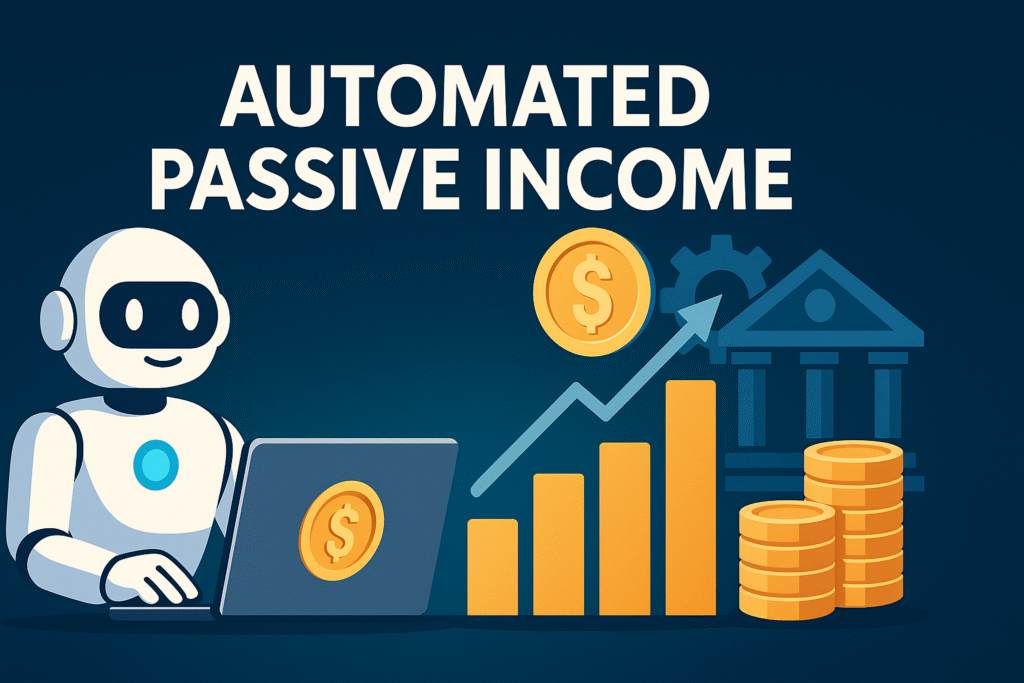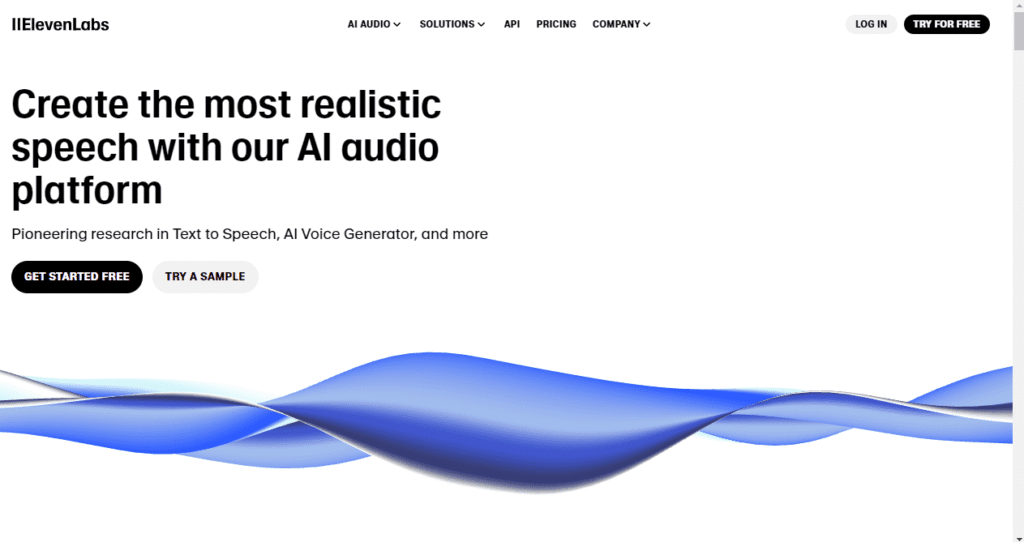
Hey there, friend! Ever dreamt of making money while you sleep? Or maybe while you’re on vacation, chilling with your family, or just, you know, living? For a long time, that sounded like a far-fetched fantasy to me. But guess what? In 2025, that dream is getting closer to reality for more and more people, thanks to something pretty cool: Automated Passive Income.
I’ve been diving deep into this space, and it’s wild how much has changed. We’re talking about creators and entrepreneurs – maybe even folks just like you and me – launching income streams that barely need them once things are set up. Think about it: once you’ve built the machine, it keeps chugging along, generating revenue with minimal oversight. And the secret sauce? Tools like AI, awesome Software-as-a-Service (SaaS) platforms, and super-efficient fulfillment services. Seriously, starting these ventures has never been easier or more scalable. It’s like we’ve been handed a cheat code for earning.
✨ So, What Exactly Is an Automated Passive Income Business?
Alright, let’s break it down because “passive income” itself can be a bit of a buzzword. Traditionally, in the world of economics, passive income is pretty much what it sounds like: earnings that require very little ongoing effort after you’ve put in the initial groundwork. Think rental income from a property, dividends from stocks, or royalties from a book you wrote years ago. Financial experts often point to these as income that flows in through systems that operate largely independently, or with just a tiny bit of supervision. I mean, who doesn’t love the idea of money magically appearing in their account?
But automated businesses? Oh, they take this concept and crank it up to eleven! This is where technology swoops in and does the heavy lifting. We’re integrating artificial intelligence (AI), clever automation tools, and slick fulfillment services so that your day-to-day workload is almost non-existent. My favorite way to think about it is this: you design it once, and the system executes it automatically.
Imagine using a platform like Printify or MyDesigns. You upload your cool design, maybe for a T-shirt or a digital planner. Once it’s listed, you don’t touch it again. When someone buys it, the system automatically processes the order, prints the item, ships it, and even handles the payment. You’re just there to collect the profit. It’s a beautiful thing, seriously. These aren’t just “side hustles for busy moms” (though they totally are!), these are entire business models designed for freedom.

🛠️ 13 Profitable Automated Business Ideas to Try in 2025
Okay, ready to get into the nitty-gritty? I’ve scoured the landscape for the models that offer the best mix of scalability, minimal upfront work, and ongoing revenue potential, all powered by automation tools. Let’s dive in!
1. Print-on-Demand (POD) This one’s a classic for a reason, and it’s still rocking the charts! The beauty of POD is that there’s no inventory to manage, and definitely no shipping headaches for you. You simply create your unique designs (think witty slogans, cool graphics, beautiful patterns) and upload them to platforms like Printify or Printful. When a customer buys something with your design – be it a shirt, a mug, a poster, or even an iPhone case – the supplier automatically prints it and ships it directly to them. You literally do the design once, and the rest is handled. It’s why places like Investopedia and the New York Post keep talking about it!
- Automation Layers I love: Design (often with AI tools!) → Listing → Order Processing → Fulfillment. It’s hands-off after the initial creative spark.
2. Affiliate Marketing Niche Sites This is where my inner content creator gets excited. Imagine creating a content-rich website focused on a very specific niche. Maybe it’s the best gear for digital nomads, or smart personal finance tips for millennials, or even reviews of obscure board games. The trick is to use AI tools (yes, like ChatGPT for drafts!) to churn out SEO-optimized articles quickly. These articles then subtly link to products or services on affiliate programs. When a visitor clicks your link and buys something, you earn a commission. It’s all about attracting eyeballs and providing value.
- Tools I use: ChatGPT for content drafts, various SEO plugins for optimization, email drip campaigns to engage subscribers, and robust link tracking software to see what’s converting.
3. AI Content Websites (Content Farms) Remember those early content farms? This is similar but with a massive upgrade. You publish blog posts on trending topics, but instead of writing every word yourself, you lean heavily on AI for content generation. Once your site starts getting traffic, you monetize it through display ads (like Google AdSense) or by integrating affiliate links. MyDesigns and SheAI are even getting into this.
- My Word of Caution: You have to watch out for quality. AI is amazing, but it still needs a human touch. Don’t just publish raw AI output; edit, fact-check, and add your unique voice to avoid low-value content. Authenticity matters more than ever.
4. Automated YouTube or TikTok Channels Okay, this one completely blew my mind when I first heard about it. AI-powered video tools like Faceless.video or AutoShorts.ai let you create entire videos without ever showing your face. They can script the video, generate natural-sounding voiceovers, edit the footage, and even auto-publish reels or shorts daily. Think about niche channels covering facts, historical events, relaxation sounds, or product comparisons. You monetize these through creator funds, ad revenue, or affiliate links. Business Insider has even highlighted how this is a new passive income side hustle.
- Why I love it: The sheer volume and consistency you can achieve with minimal effort is incredible.
5. Vending Machines & Kiosks This is a fun one because it’s a bit of a throwback to physical automation. While it’s not digital, it fits the passive bill. I’ve seen individuals on TikTok reporting returns of $900/month (or more!) from simple soda or snack vending machines. Your only recurring work? Restocking the machine every now and then and collecting the cash. The upfront investment can be higher than digital options, but the return can be surprisingly quick and steady. The New York Post even featured entrepreneurs making a killing from this!
- My takeaway: Don’t underestimate the power of old-school physical businesses when they’re automated.
6. E-Book or Course Sales This is a classic for a reason. You create digital products like an e-book or an online course once, and then you can sell it repeatedly forever. Platforms like Gumroad, Teachable, or Udemy handle the delivery, payment processing, and often even some marketing. Whether you’re teaching a skill, sharing a recipe collection, or diving into a niche topic, your knowledge becomes an asset that keeps paying you. Kartra and Podbase are excellent tools for managing this.
- Why it works: It’s pure leverage. Your time spent creating is finite, but the income potential is infinite.
7. Membership or Subscription Sites Want recurring revenue? This is your answer. Offer exclusive content, specialized tools, or access to a thriving community behind a paywall. You set up recurring billing, and platforms like Kartra or Podia automate content delivery and member management. Think of a premium newsletter, a private forum for hobbyists, or a library of templates for designers. Aifire and Magical also come into play here for streamlining.
- My thought: This builds strong customer loyalty and predictable income, which is gold.
8. Niche Tool or Extension Micro-SaaS This might sound techy, but in 2025, it’s becoming simpler than you think. You can use AI to help generate simple tools – like calculators, templated scripts for specific tasks, or even browser extensions that solve a common small problem. You offer a free version to attract users, and then have subscription tiers for advanced features. The coolest part? Once built, these tools often run and update automatically, requiring minimal maintenance. Medium and Aifire have highlighted this trend.
- The Appeal: Solving a specific pain point for a small group of people can be incredibly profitable.
9. Affiliate Automation with AI This is like taking traditional affiliate marketing and supercharging it. You combine AI tools with topic-specific affiliate links and then let the AI generate automated content updates. This means the AI can handle seasonal updates (think “best summer gadgets”), new product comparisons, and even craft personalized email reminders to your audience. SheAI and Podbase can help you streamline.
- My view: This allows you to scale your affiliate efforts far beyond what you could manually.
10. Digital Product Marketplaces Similar to selling e-books, but think broader: printable planners, digital art files, customizable templates, fonts, presets, or even stock photos. You create these digital assets once and list them on marketplaces like Etsy, Creative Market, or your own storefront. They generate sales continuously without you ever needing to restock physical inventory. MyDesigns is a great platform for creating and selling a wide range of these.
- Why it’s great for creatives: Your artistic output can directly translate into passive income.
11. High-Yield Savings, CDs, & Dividend Investments Okay, so this isn’t exactly a “business” in the traditional sense, but it’s pure, hands-off financial passive income. Investing in high-yield savings accounts or Certificates of Deposit (CDs) gives you guaranteed interest. Dividend stocks pay you a portion of the company’s profits just for holding their shares. Once you’ve made the initial investment, there’s no setup beyond that. Investopedia, NerdWallet, and Shopify’s guides often remind us of these foundational passive income streams for diversifying.
- My advice: Always a good idea to have some of your money working for you this way.
12. Crypto Staking & Yield Farming If you’re already in the crypto world, this is a more advanced option. You essentially lock up your digital assets (like certain cryptocurrencies) in staking pools or liquidity pools to help secure a blockchain network or facilitate decentralized finance (DeFi) protocols. In return, you earn rewards. The platforms automate the payouts, so once your assets are locked in, it’s pretty hands-off. NerdWallet has some good primers on this.
- Important: This requires understanding the crypto market and its inherent risks. Do your homework!
13. Rental & Asset Leasing Beyond just owning entire houses, think smaller-scale asset leasing. Own a parking spot in a busy city? Lease it out. Have an unused storage unit? Rent it. Even a small piece of land for billboard advertising. These assets generate rent with minimal ongoing maintenance once you have systems in place for tenant management, key access (like lockboxes), or automated billing. NerdWallet and Coursera courses often touch on how real estate, even micro-real estate, can be a great passive play.
- The Bottom Line: If you have underutilized assets, there’s likely a way to monetize them passively.

📊 How Do These Ideas Stack Up? (Startup Cost, Time to Profit, Automation Complexity)
So, how do you pick the right one for you? Well, I like to think about three key things when looking at these automated businesses: the initial Startup Cost, how long it might take to see a decent Time to Profit, and the general Automation Complexity involved in setting it up.
- Print-on-Demand (POD): Generally, I’d say this is Low on startup cost (just software subscriptions, if any, and design tools), pretty quick on Time to Profit (1-2 months if you hit a good design), and Easy to automate thanks to platforms.
- Affiliate Marketing Niche Sites: This can be Low–Medium startup, depending on how much you outsource or invest in tools. Time to Profit is usually longer, say 3-6 months, as SEO takes time. The Automation Complexity is Medium, as you’ll be juggling content, SEO, and email.
- AI Content Websites: Similar to affiliate sites in Low startup cost, potentially quicker Time to Profit (2-4 months) if you go for high volume on trending topics. Automation Complexity is Medium because you’ll need robust AI tools and strategies to ensure quality and continuous publishing.
- Automated YouTube or TikTok Channels: Can be Medium startup due to video tool subscriptions, but the Time to Profit can be 3-6 months, or even quicker if a video goes viral. The Automation Complexity is High because you’re dealing with video editing and platform algorithms.
- Vending Machines: This is typically a Medium startup cost for the machine itself, but Time to Profit can be surprisingly fast, sometimes within 1 month if you find a prime location. The Automation Complexity is Easy once installed; it’s mostly restocking.
This mental chart helps me decide where to put my initial energy and resources based on my budget and how much tech-savvy I’m feeling!
💡 FAQ – Your Burning Questions Answered!
I get a lot of questions about this stuff, and these are the most common ones:
Q: Can a passive income idea ever be completely automatic? A: Not fully, and I want to be super clear about that. Every single model I listed, no matter how automated, will require some degree of periodic maintenance. This could be updating content, providing minimal customer support, refreshing your product listings, or even just checking on your vending machine. Think of it as “low effort” or “minimal oversight,” rather than “zero effort.”
Q: Which model needs the least upfront work? A: In my experience, Print-on-Demand and digital products (like e-books or templates) are among the easiest to get started with. They typically have a low startup cost (often just software subscriptions or platform fees) and require minimal ongoing effort once your designs or products are uploaded.
Q: Are these legal and ethical? A: Absolutely, these models are entirely legal and ethical, provided you play by the rules. That means respecting copyright laws, being transparent with your audience (especially if you’re using AI-generated content—always disclose!), avoiding plagiarism, and ensuring the authenticity and quality of your content. Common sense and good business practices go a long way.
Q: How long before I see real income? A: Ah, the million-dollar question! It really depends on the model. For something like a vending machine in a high-traffic area, you could start seeing income within weeks. For an affiliate blogging site, building traffic and authority might take 3–6 months (or even longer) before you see significant income. Digital products and POD can be quicker if you have a good marketing strategy. Consistency is truly key here.
Q: What tools help automate these businesses? A: Oh, the tools are half the fun! Here are some I’ve found incredibly useful:
- AI content: ChatGPT, Jasper, Writesonic for generating text.
- POD: Printify, Printful for printing and fulfillment.
- Video automation: Faceless.video, AutoShorts.ai for creating videos without being on camera.
- Analytics & SEO: SEMrush, Ahrefs for understanding your audience and ranking higher.
- Payments & E-commerce: Stripe, Gumroad, Shopify for handling transactions and setting up storefronts.
- Course/Membership Platforms: Teachable, Udemy, Kartra, Podia for selling digital products and managing communities.
✅ Final Thoughts
Look, automated business models aren’t some kind of magic shortcut to overnight riches – trust me, I wish they were! But they are incredibly powerful tools when you set them up properly. My ultimate takeaway is that if you combine strategic planning, leverage the incredible capabilities of AI and other automation tools, and maintain consistency, you can absolutely build income streams that truly support your lifestyle.
Whether you’re a creator, a freelancer fed up with trading time for money, or an investor looking for new opportunities, automation can totally transform your effort into amazing results over time. It’s about building assets that work for you, rather than just working for money.
Would you like assistance building one of these models – maybe drafting a POD plan, creating an outline for an affiliate blog, or scripting a YouTube automation workflow? Just say the word. I’m excited to see what you build!
📚 References
- Network Solutions: 10 Passive Income Ideas for 2025 – https://www.networksolutions.com/blog/passive-income-ideas/
- Printify: Automated business ideas to earn passive income – https://printify.com/blog/automated-business-ideas/
- Litslink: 10 Automated Online Business Ideas for Passive Income – https://litslink.com/blog/10-automated-online-business-ideas-for-passive-income
- Podbase: 13 Proven Automated Business Ideas for 2025 – https://www.podbase.com/blogs/automated-business-ideas
- Business Insider: AI startups offering automated videos – https://www.businessinsider.com/new-passive-income-side-hustle-from-ai-startups-tiktok-youtube-2024-9
- New York Post / TikTok entrepreneur money from vending machines – https://nypost.com/2025/01/27/lifestyle/entrepreneurs-non-work-side-hustle…
- NerdWallet / Investopedia passive income methods – https://www.investopedia.com/best-ways-to-earn-passive-income-7481030